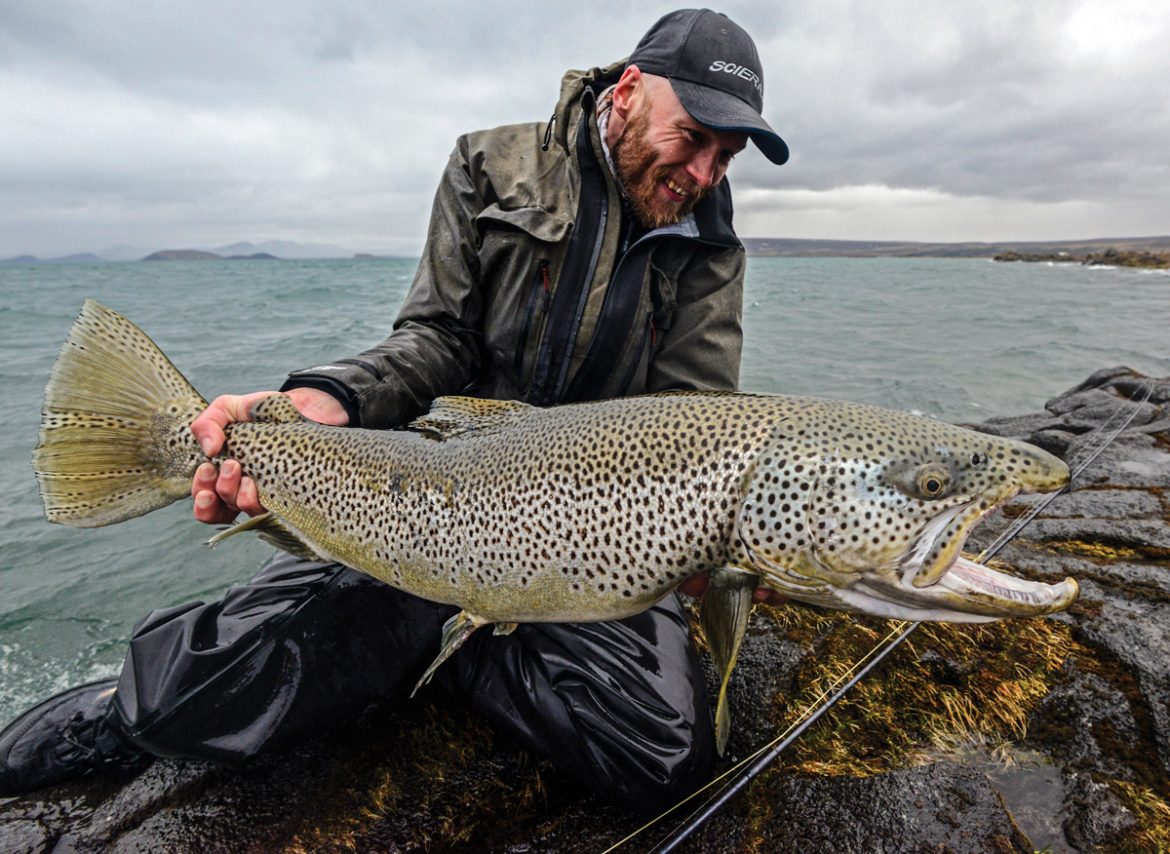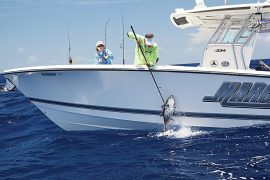
Iceland’s Jurassic lake delivers mind-boggling numbers of monster brown trout every year.
[by Rasmus Ovesen]THE TAKE IS BRUTAL AND RESOLUTE— like an unexpected punch in the stomach. I’ve sent an obstinate cast into howling onshore winds, and even though I haven’t quite stretched the leader, I’ve managed to reach the drastic and alluring drop-off about 20 meters out that runs along the lake’s volcanic shoreline. Before I even set the hook, the fly rod goes into a convulsive seizure and fly line peels off the reel, slashing through the crystalline water surface and into the agitated, foaming waves. Seconds later, alarming amounts of fluorescent yellow backing follow. The fly reel’s tormented snarl won’t come to an end.
Out of the corner of my eye, I see the contours of an ominous creature catapulting itself into the air approximately 60 meters out. It towers briefly above the roaring waves and lands on its back in a whalelike crash that sends sparkling droplets of water high into the air, and shock waves through my galloping heart.
Backing continues to peel through the rod guides of my dangerously arced rod, and I’m desperately trying to calm my thinly worn nerves.
When the fish finally slows down, the fight enters a new phase. Instead of racing toward deep water, the fish thrashes about in the surface, doggedly trying to eliminate the inexplicable pressure and drag.

I desperately lean back on the fish until the cork handle creaks, and after several minutes of tug-of-war, I slowly start gaining the upper hand. The fish comes closer to shore, I recover fly line, and soon get a short glimpse of the fish in the crashing waves. It’s a sight that sends shivers down my spine. The fish is big—really big.
The fly seems to be solidly lodged in the fish’s jaw, but the razor-sharp volcanic cliffs and rocks along the shoreline are disturbing. If the fish decides to seek cover, there’s no doubt it’ll be more than my leader can endure. The fish isn’t tired, but also doesn’t seem fully aware of the severity of the situation, and I’m able to bring it close to a small point where our Icelandic guide is waiting with a net. The fish glides over the frame of the net and into the basket.
It’s an ancient-looking warrior of a trout—a massive fish with a big, cannibalistic head, a tail like a metal blade, an incalculable number of dots resembling ink stains, golden flanks, starry eyes, and flamboyantly metallic blue gill plates. The fish measures close to 93 centimeters (36 inches), and even though it isn’t quite so fat as most fish in the lake, it weighs close to 10 kilograms (22 pounds). It is a veritable dream fish.
Using the smoldering, lead-heavy sky as a backdrop, my friend…





